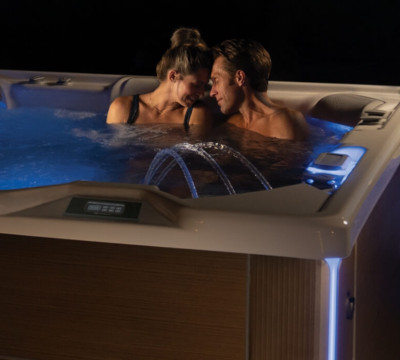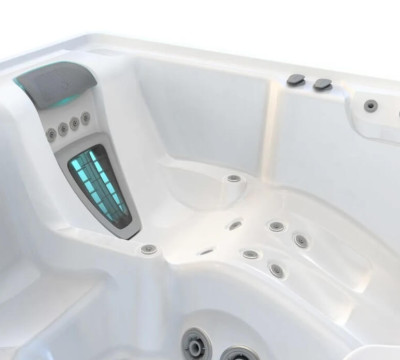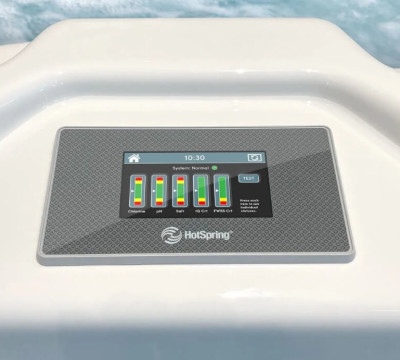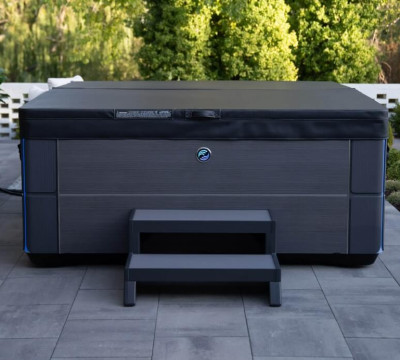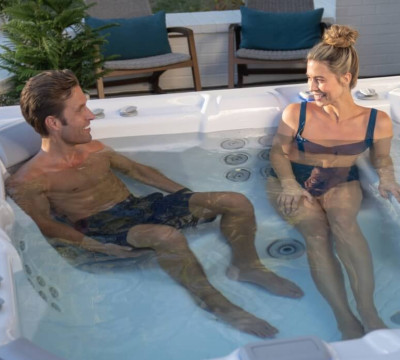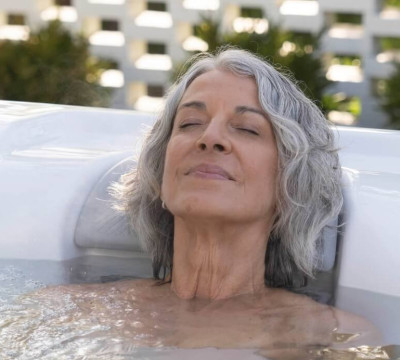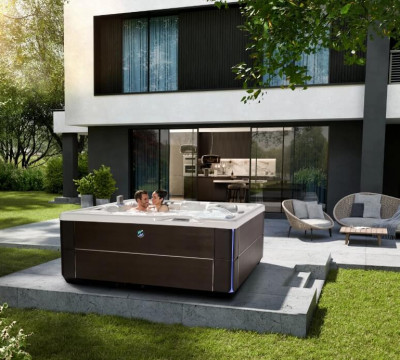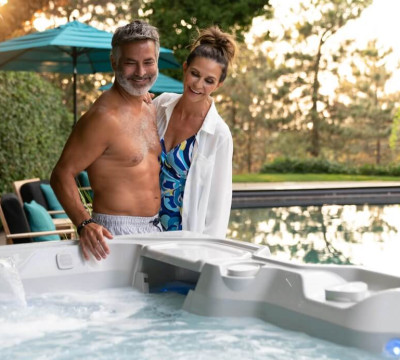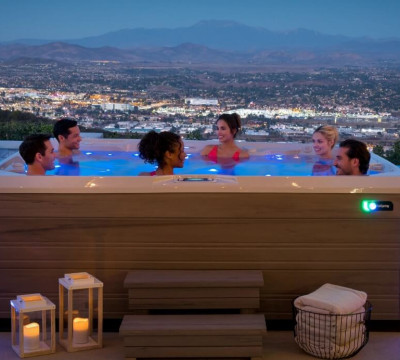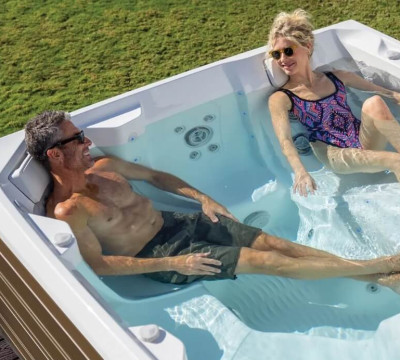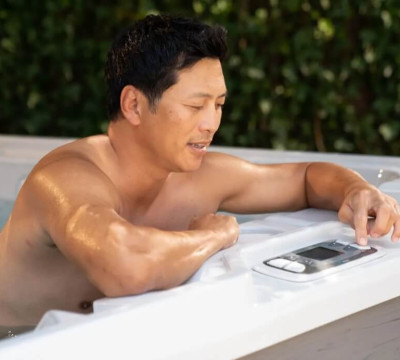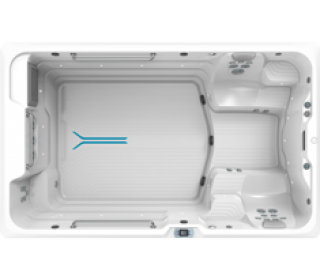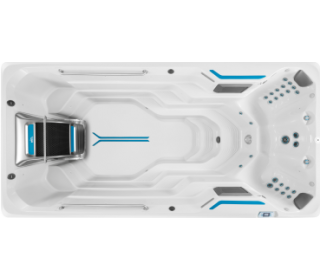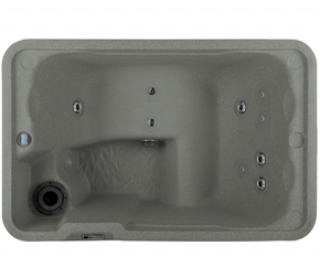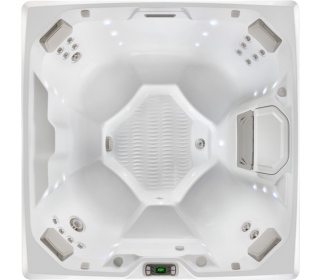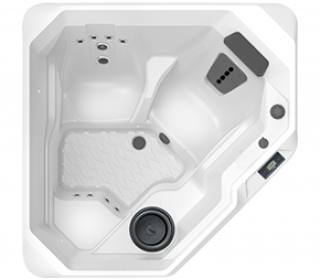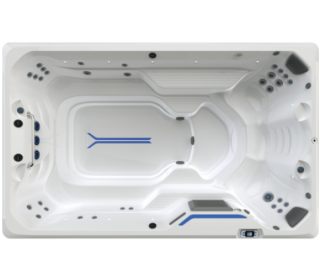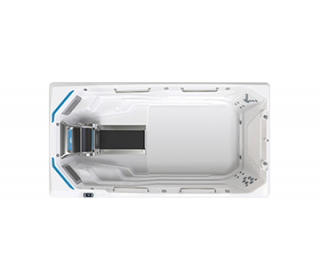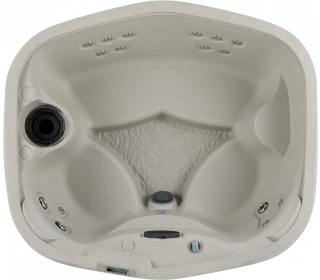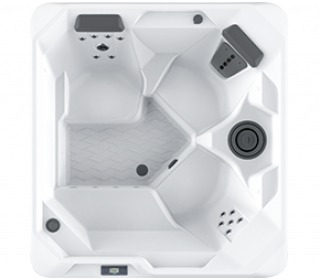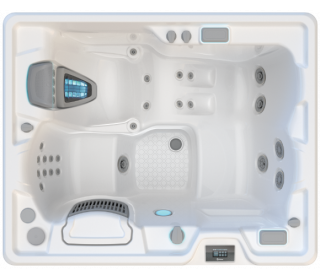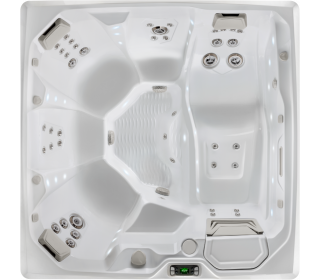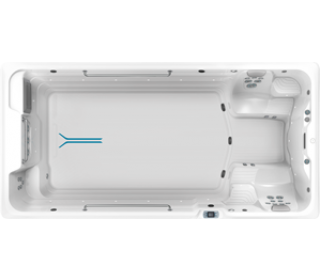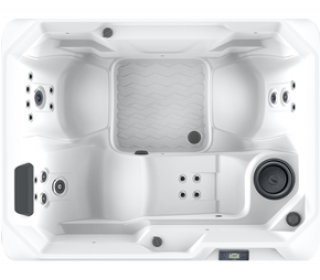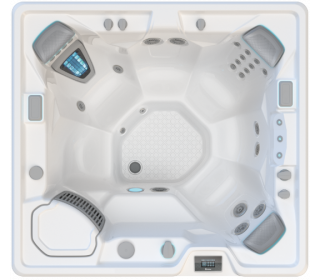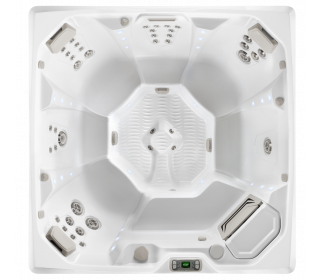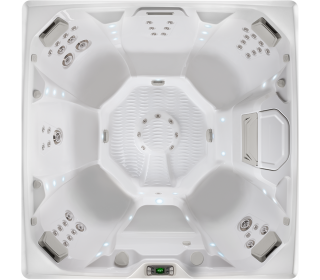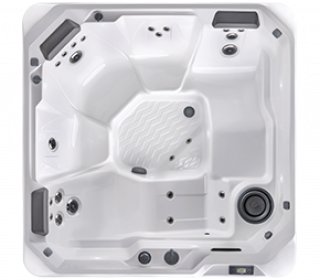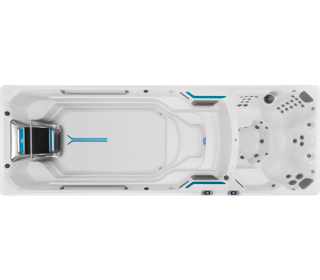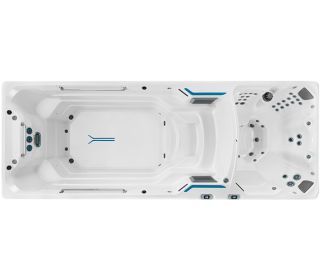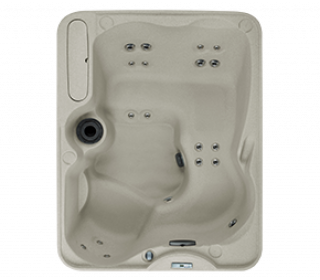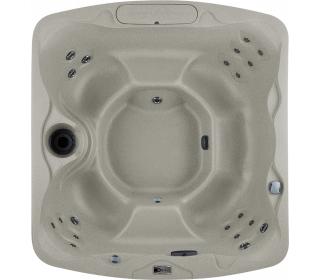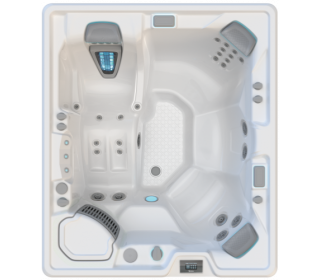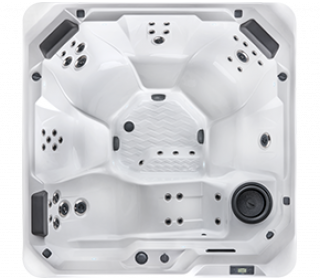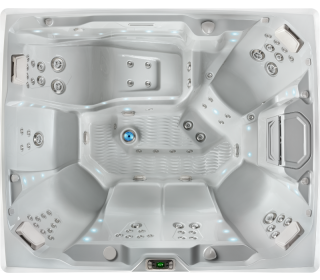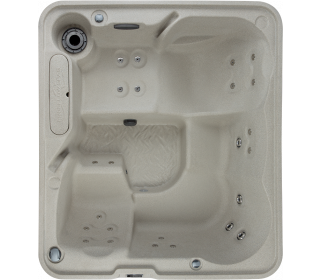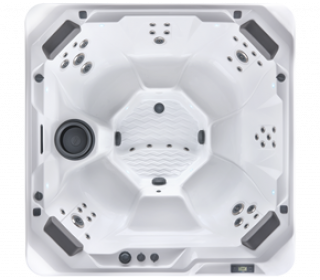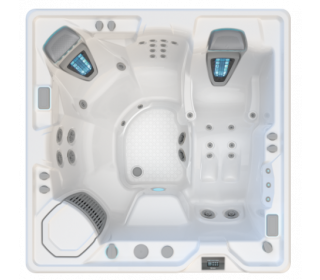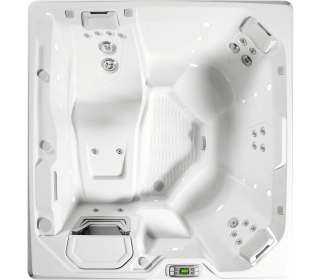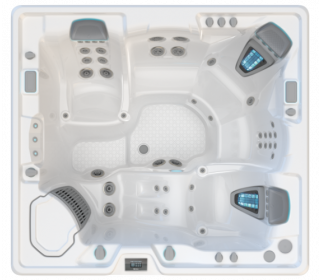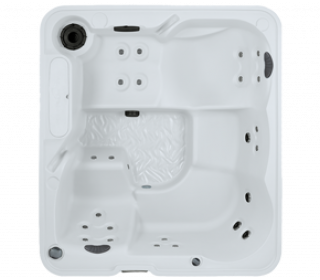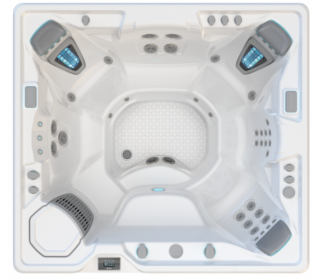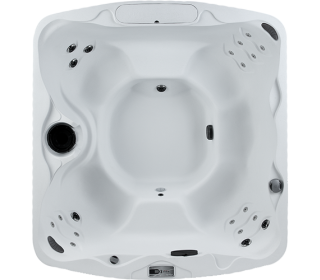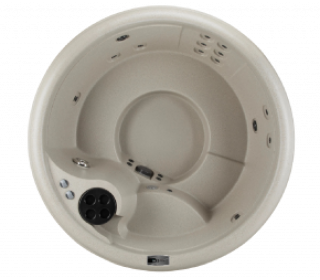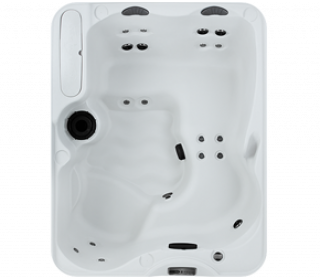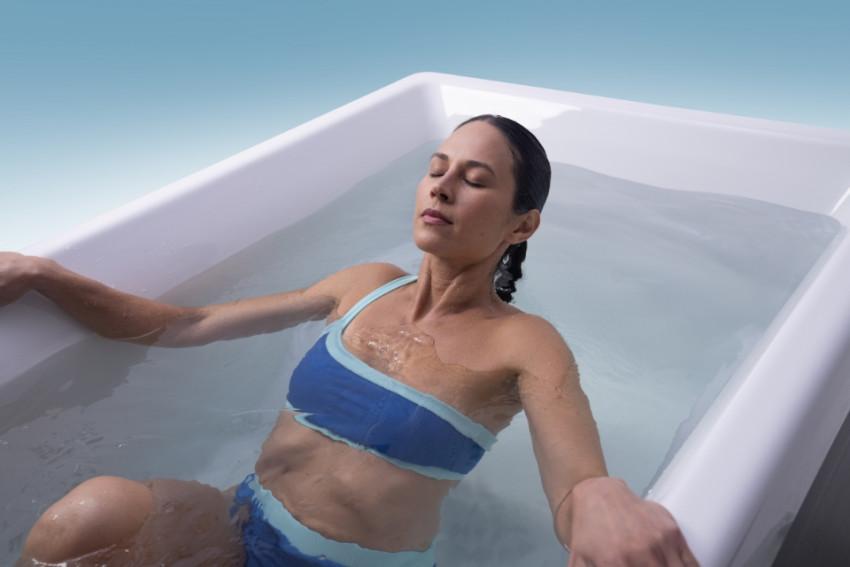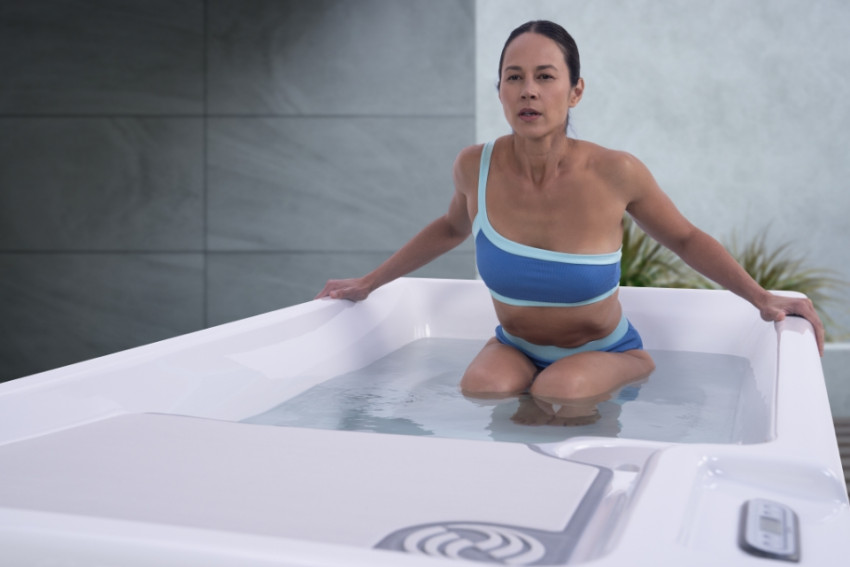Guide to spa pool insulation
As the proud owner of a backyard spa pool, you’ll need to heat up around 1500L of water, then keep this large pool hot all year round, through even the coldest of winters.
Spa pool insulation is therefore critical, as it retains that all important heat. It is designed to trap the warmth created by the heaters within the spa, keeping your water warmer for longer and reducing power bills in the process.
What separates good insulation from bad? And what should you consider when shopping for your new spa? In this guide we’ll answer all these questions and more.
Insulation: a key quality indicator
The better the insulation, the less work your spa has to do. High quality insulation increases the comfort of your soak, ensuring your spa is always at the temperature you need it to be while lowering energy use and your power bill.
In a spa pool that is thinly or poorly insulated, or even totally uninsulated, heat quickly escapes into the surrounding environment, leading to:
- A more time-consuming heating process that forces you to wait every time you want to use your spa.
- Cooler water that makes for a less comfortable soak.
- The heater working constantly to maintain your spa temperature, leading to higher power bills.
- The harder working components wearing out faster and needing to be replaced.
In reality a spa pool that doesn't run well, requires more work or breaks down faster is a spa pool you won't want to use. One that retains its heat, uses minimal power and will work for years to come, however, is a spa pool that will deliver all the benefits that come with regular use.
The best spa pools are insulated like industrial freezers
Since insulation directly affects both daily and long-term operating costs, choosing a model with the best insulation also means that you’ll be choosing a model with the lowest cost of ownership.
If you choose well you’ll secure a model with insulation similar to that found in the most temperature-dependent of applications, such as industrial freezers. Just as high quality insulation can keep the cold in, so too can it keep the cold out, making it perfect for spa pools installed in cold climates.
In reality high quality insulation is a wise choice regardless of climate, as your spa pool water will inevitably be sitting at a higher temperature than the ambient air that surrounds it.
How is a spa pool insulated?
There are two main elements to spa pool insulation.
Cabinet insulation
The cabinet of your spa pool should be filled with some form of insulation to ensure heat isn’t transferred out through the walls and base. This insulation is often made of polyurethane foam, though a range of other materials are used. The foam can be rigid or sprayed in. Spa pool insulation varies in density, and generally speaking the heavier the insulation, the higher the performance.
Spa cover
Heat rises, so arguably the most important part of your spa pool's insulation system is the cover, as the open air above the water is where the overwhelming majority of heat will be lost.
The best spa pool covers are built to last, made to fit your specific model, and filled with high density foam insulation. The centre of a good spa pool cover is higher than the edges to ensure rain doesn’t pool. The skirt should also completely cover the spa pool shell.
The cover should be treated with care. It should never be used as a table or a place to put things. The life of a cover can also be extended with protectants that mitigate the degrading effects of UV.
What are the different types of spa pool insulation?
No insulation
Inflatable spas and spa-in-a-box models have zero insulation. An uninsulated spa will usually need to be brought up to your preferred temperature every time you want to use it, and will lose heat rapidly during use.
Don’t be fooled if you see ‘insulated’ printed on the box – some manufacturers use it to simply describe the materials from which the cabinet or tub is made. It’s like saying the cardboard box that the spa came in is also ‘insulated’.
Partial foam
Many popular spa pool brands use partial foam insulation, which is installed within the spa cabinet on the outer wall of the shell. This insulation comes in two forms: rigid foam boards or sprayed-in foam. It can add a small amount of structural strength to the spa and components.
Partial foam was the industry standard for many years. Although this type of spa is more energy efficient than inflatable and uninsulated spa pools, there are far better options available.
The issue is that the uninsulated inner wall of the spa shell meets a layer of air. The cabinet is not airtight, so warmth escapes as this air leaks out. If your spa pool uses air-blown jets, even more air will be pumped in from outside, which further serves to cool the water.
Partial foam spa pools are still manufactured today, mainly because they are cheap to construct. A manufacturer must invest heavily in facility and machinery upgrades to incorporate high-end insulation into their spa pools, and many have chosen not to make that investment.
Thermal wrap
Thermal wrap (or thermal blanket) insulation sees a reflective material installed on the inside of the spa cabinet. It can be used alone or in combination with sprayed in partial foam.
A thermal wrap will reflect some heat back into the spa, but not enough to keep the water at spa pool temperatures. Some swim spas are insulated with thermal blankets because their heat needs are slightly lower – swim spa water temperatures tend to be set at 25-30C, while spa pools are set to 35-40C.
Full foam
In recent years full foam insulation has become the industry standard amongst leading spa pool manufacturers, for a single, simple reason: full foam is incredibly energy-efficient. A full-foam fitted spa pool can use less than half the energy of a partial foam spa.
The cost of running a spa pool is one of main reasons why shoppers decide against making the investment, and manufacturers are well aware of this fact. Significant investments have been made in research and development to lower these costs, and the introduction of full foam insulation was a huge leap forward.
Full foam insulation sees the interior of the cabinet completely filled with spray-in foam. This not only keeps the heat in, it also adds serious structural integrity to the spa that lengthens the life of the cabinet and components.
This structural support is more important than you might realise. Running the spa pool motor, pumps and jets causes vibrations that can lead to wear and tear on the components and plumbing. Full foam encapsulates the components and reduces vibration, drastically lowering rates of failure, such as pipe fittings working themselves loose over time.
While full foam spa pools represent a larger upfront investment than partial foam models, they tend to pay this investment back over time through lower power bills.
FiberCor® Installation
FiberCor® is a proprietary full cavity insulation exclusively used by Watkins Wellness™, Hot Spring’s parent company. FiberCor® is a wool-like non-hazardous fibre that is four times denser than spray in foam. It is evenly dispersed inside the spa cabinet, leaving no gaps or thermal voids.
FiberCor® is a recent innovation in spa pool insulation and offers several benefits. It is efficient, non-toxic, reusable and partially recycled, it prevents mould and mildew, and it is very easy to remove and replace if servicing is necessary.
The Hot Spring Limelight® and Hot Spot® Collections feature FiberCor® insulation.
Multi-density foam
As a general rule, the denser the foam, the greater its insulating properties. But it’s not as simple as using the heaviest materials possible, as dense foams tend to expand over time, causing damage to the spa pool cabinetry. But there is a solution: multi-density foam.
Early full-foam spa pools were filled with a single density of foam, and many are still manufactured this way, because it’s relatively simple and cost-effective. But multi-density foam allows you to enjoy the high-end insulation of dense foam, while retaining the structural integrity of the machine.
In a multi-density full-foam spa pool, foams of various densities are sprayed in layers, filling the cabinet and surrounding the plumbing. Hot Spring® models feature two foam densities on the shell, four in the cabinet, and one extremely dense layer on the bottom. Each layer is strategically chosen for maximum insulation and structural support, while minimising expansion and contraction.
The end result: the best possible insulation and the lowest possible operating costs, as seen in Hot Spring’s premier Highlife® collection.
Spa pool insulation comparison chart
| Type of spa pool insulation | Example | Pros | Cons |
|---|---|---|---|
| No insulation | Inflatable spa pool | Cheap | Expensive to run, vulnerable to freezing |
| Partial foam | Rotationally moulded spa | Purchase price on the low end; may be acceptable in warmer climates | Expensive to run vs full foam, vulnerable to freezing |
| Thermal wrap | Swim spa | Provides basic insulation for a lower temp heated pool | Cannot meet the demands of a spa pool |
| Full Foam | Modern mid-range spa brands | Insulation fills the cabinet and eliminates air flow that allows heat to escape | Single density full foam does not provide greatest energy efficiency – higher density can't be used because of expansion |
| FiberCor® | Modern high-end spas, including Limelight® and HotSpot® collections | Loose wool-like fibres provide the same insulation value as high density polyurethane foam, but are easy to remove when repair is needed | Less insulation value than multi-density full foam |
| Multi-density full foam | Modern premium quality spas, including Hot Spring Highlife® | Greatest energy efficiency and lowest possible operating costs | Highest price range |
Ways to optimise spa pool insulation
While the two most important elements of spa pool insulation are the cabinet insulation and the cover, there are a number of other ways that leading spa pool manufacturers enhance insulation and energy efficiency. Here are some features to look out for when comparing models.
Reduced ground contact
Some spas enhance insulation by adding a base pan to the bottom of the spa pool which limits ground contact and reduces the intrusion of cold air. Spas that don't have a base pan may use a special type of plastic sheeting to seal the bottom or may not have a seal at all.
Hot Spring Highlife® Collection of spa pools feature a unique combination of lightweight polymeric substructure and heavy duty base pan.
Pump shroud (hot air induction jets)
Spa components generate heat just by running. On many spas this heat vents to the outside and is lost. On a premium spa, a pump shroud captures this excess heat and transfers it to the water via hot air induction jets. The pump shroud also pulls outside air in to cool the pump and prevent overheating. The patented Hot Spring pump shroud is available on all Highlife® collection spas.
Spa blanket
A reflective winter blanket can be placed inside the equipment compartment to protect the equipment from freezing. This accessory is most useful for owners who live in extremely cold climates such as high in the Southern Alps. It should be noted that the winter blanket does not keep the water hot.
A floating blanket can also be placed on the surface of the water, though if you have a high quality fitted cover the floating blanket is largely redundant – it will not measurably increase heat retention.
Nevertheless, this can be a convenient accessory for reducing heat loss and debris intrusion when the cover is off, such as for owners who don't want to repeatedly remove and replace the cover during short intervals between uses. Some owners also say that their floating blanket reduces evaporation, which may extend cover life if the blanket is used in combination with the cover.
Spa pool insulation: myths and facts
All spa pool salespeople have their preferences when it comes to spa brands and models, which can lead to some making claims that aren't supported by facts. As the world's leading spa pool manufacturer, at Hot Spring we know spa pools better than anyone else, so we’d like to dispel a few myths you may have heard about spa pool insulation.
Myth: A full foam spa pool is a nightmare to repair when there's a leak.
Fact: Full foam insulation adds so much structural support that leaks are far less likely to occur in the first place.
Be wary of the salesperson who emphasises repair issues, as this is a sign that they are accustomed to selling spas that frequently need repair. If a repair is needed in a fully foamed spa pool, a trained technician will be able to locate and correct the problem quickly and easily.
This myth is a little illogical. Imagine shopping for a luxury car and telling yourself “I want it, but I won’t buy it because one day it might have a problem, and I heard repairs are expensive.” It simply doesn’t make sense, as one of the main reasons to choose a premium product is because they tend to be less prone to issues. While it's true that addressing an equipment problem in a fully foamed tub is more labour intensive than doing so in a partially-foamed tub, you’re less likely to have issues in the first place.
FiberCor® is a great alternative to full foam insulation, and has the added benefit of allowing easy access to components that require service. In the event of a leak, the water is wicked straight down, making the location of the leak very easy to find. Then the technician can easily remove a portion of the non-toxic FiberCor, complete the repair and replace the insulation. The fibres do not stick to the plumbing or components.
Myth: Full foam tubs attract rodents.
Fact: Full foam does not attract rodents, and they’d struggle to enter even if they tried.
In a multi-density, full-foam spa pool, a layer of extremely high density foam seals the bottom of the spa, meaning a rodent cannot enter. What’s more, the material is synthetic and not tasty at all to critters looking to eat their way into a new home. Rodents do love warm, small spaces, but they'll have a hard time finding one in a full-foam spa pool.
Myth: Full foam spa pools overheat in the summer.
Fact: Ambient temperature poses no risk to high-quality spa pools.
Spa pool insulation, like the insulation in your home, protects the equipment inside and deals equally effectively with both the cold and the heat. It is instead the quality of the components and engineering that determine the risk factor for overheating. A spa pool made by a leading manufacturer is unlikely to have the defects that lead to overheating.
Myth: Full foam contracts and expands, causing movement or breakage in the components and plumbing.
Fact: High-quality foam will not expand and contract in a way that damages the spa pool.
All full foam is not created equal. Hot Spring Spas' multi-density full foam insulation is engineered for minimal expansion and contraction. FiberCor® is not subject to expansion and contraction.
Choosing your spa pool
Maximum spa pool enjoyment comes when you use your machine regularly. When your spa is fitted with high quality insulation you’ll enjoy a more luxurious soaking experience at a lower price, and will therefore be far more likely to use the spa to its full potential.
Be wary of how terms are used – remember that the word ‘insulated’ can mean a lot of different things, and that foams can come in any number of different layouts and varieties. Remember too that the spa pool sticker price only ever tells part of the story – savings today can result in serious costs in the long run.
Some spa pool manufacturers offer basic models with no insulation or partial insulation, using low prices to bring customers in the door, then selling full foam insulation as an upgrade – a sort of backdoor method of getting the customer to pay more for a full-foam tub.
One way to avoid all these potential pitfalls is to choose a Hot Spring from a trusted local dealer. Book your test soak today!


